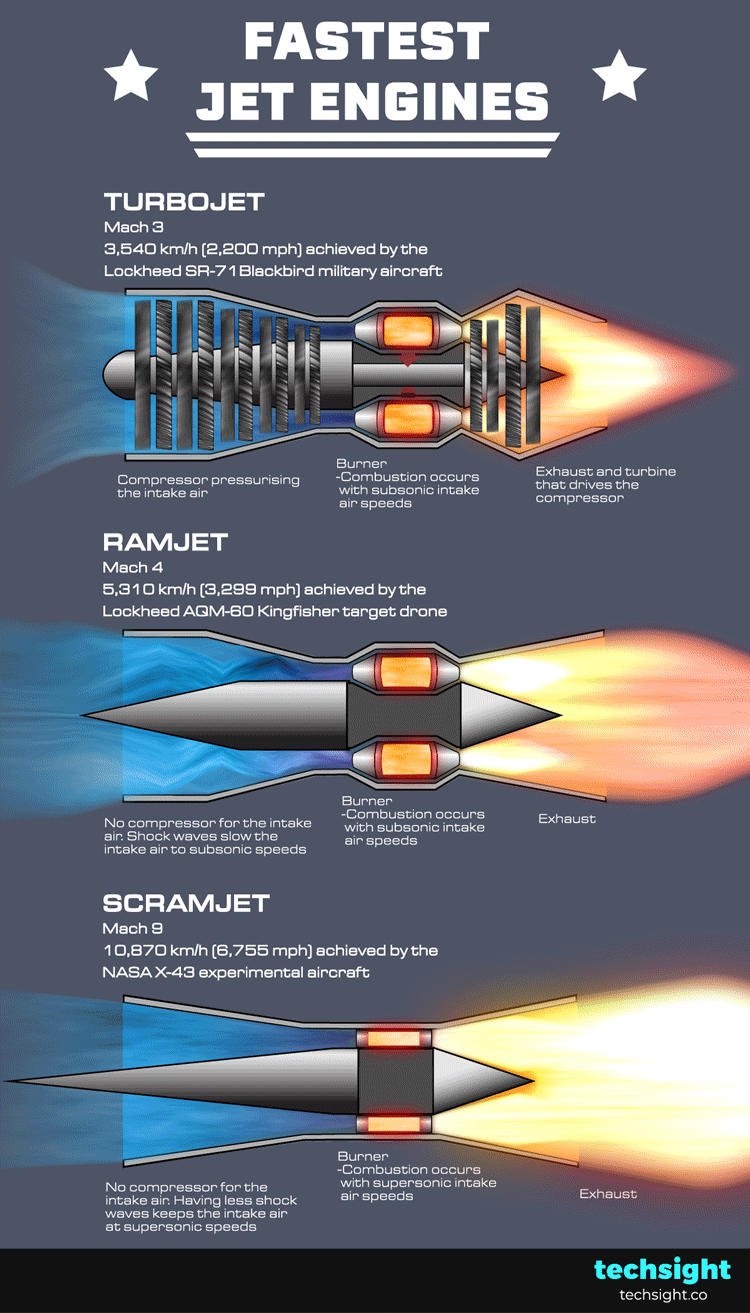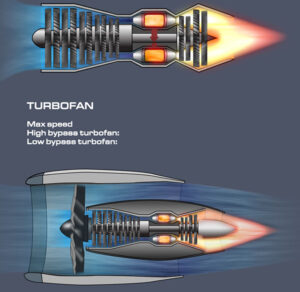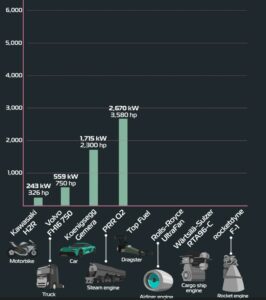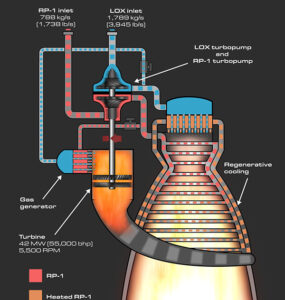
The engineering marvel of the jet engine
In 1903, the first motorised aircraft defied gravity. This feat, achieved by the Wright brothers, saw a total flight time of 12 seconds and a max speed of 6.8 mph.
Fast forward only 50 years, and fighter jets were exceeding the speed of sound. Key to this progress was the means of propulsion. Propellors, which airplanes first used for thrust, soon reached their limits and there was a need for a new form of thrust to achieve higher speeds.
The jet engine was the answer. This fire-breathing marvel produces amazing levels of thrust and is a prime example of engineering.
Today, novel forms of the jet engine are driving experimental aircraft to several times the speed of sound. Further advances in this field could have an enormous impact on commercial air travel. Perhaps one day we will zoom across the globe in a matter of minutes and not hours.
What is a jet engine and how does it work?
A jet engine uses combustion to create thrust and forward motion for aircraft. Combustion is what you get when you ignite fuel and make it react with oxygen. The result is heat and a rapid expansion of gases.
With a jet engine, a nozzle directs the expanding gasses out through the back of the engine. As every force has an equal and opposite reaction (Newtown’s third law), the expelled gases push the aircraft forward with explosive power.
To sustain thrust and travel long distances, jet aircraft must carry fuel. The oxygen, on the other hand, comes from the atmosphere. This makes jet engines ‘air-breathing’.
Rocket engines are in contrast to this, and use liquid oxygen carried by the rocket instead of air. This makes them capable of higher levels of thrust and launches into orbit. Although this comes with extra weight and complexity. Liquid oxygen needs to be pressurised and cooled to cryogenic temperatures; oxygen has a boiling point of -183degC (-297degF)! For these reasons, rocket engines are impractical for general air travel.
While the basics are common across all jet engines, there are variations in design and function. Below, I will discuss three of the fastest jet engine types and the speeds they can reach.
The turbojet: SR-71 Blackbird toying with enemy jets at mach 3
The turbojet is the original jet engine. Coincident British and German programs developed it in the 1930s.
The first major part of the turbojet is the compressor. This draws in and compresses air, often down to 1/30 its original volume. By doing so, efficient combustion can occur.
Compressors consist of rotors and stators. The rotor blades spin to create a pressure differential and draw in air. The stator blades, which are fixed and located after the rotor blades, prevent the air from swirling. By having a series of rotors and stators and an air channel that narrows, the compressor squeezes the air before the next stage of the cycle.
After compression, the air is mixed with fuel in the burners. Once ignited, combustion occurs and the engine directs the expanding gases towards the turbine and nozzle.
The rush of gas passing through the turbine vanes causes the turbine to spin. A shaft then transfers this rotational energy upstream and drives the compressor. The term turbo refers to this process where the intake pressurisation is driven by the use of exhaust gases.
The Lockheed SR-71 Blackbird is the fastest manned jet aircraft in history and was powered by Pratt and Whitney J58 turbojet engines. This aircraft, developed by the US, achieved a speed of 3,540 km/h (2,200 mph) which is over three times the speed of sound (mach 3). The Blackbird was so fast it could carelessly taunt and toy with enemy fighter jets, according to Russian pilot and defector, Viktor Belenko.
Despite playing a key part in the turbojet’s function, the turbo system is its own Achilles’ heel in terms of speed. At a certain point, the compressor adds more drag than benefit and speed gains are not possible. In fact, the J58 turbojet uses an air bypass system at high speeds to push past the upper limits. Without it, the Blackbird would have seen max speeds of under mach 3 like most other turbojet aircraft.
The ramjet: AQM-60 Kingfisher outrunning missiles at mach 4
The design of the ramjet allows it to reach higher speeds than the turbojet. Ironically, it is also somewhat simpler.
Unlike the turbojet, the ramjet has no mechanical compressor and turbine. The ramjet instead relies on forward motion to ‘ram’ air into the engine and create compression. This means the ramjet cannot function while stationary and has to be launched at speed for combustion to start.
However, the absence of the compressor and turbine also reduces drag. With this come a higher maximum speed the ramjet can achieve.
The Lockheed AQM-60 Kingfisher was a 1950s era test drone and used ramjet propulsion. Its role was to provide target practice for anti-missile systems. But when it became clear the Kingfisher could easily outrun the defence systems it was made to test, political fallout ensued. Its max speed was 5,310 km/h (3,299 mph) which is four times the speed of sound (mach 4).
A key part of ramjet function are the shock waves that form in the inlet cone. Shock waves are air disturbances that move faster than the speed of sound. These help pressurise the ramjet inlet air for effective combustion. Although, they also slow the intake air to subsonic speeds and thus restrict the engine’s maximum speed. Similar to the turbojet compressor, there is a threshold where the drag of the shock waves becomes greater than their benefit.
The scramjet: NASA X-43 almost doubling speed records at mach 9
The ‘sc’ in scramjet stands for Supersonic Combustion. This engine is like the ramjet, but with one key difference – combustion occurs with supersonic intake air speeds.
By allowing the intake air to exceed the speed of sound, the max speed of the engine increases. The throughput of the engine becomes unrestricted and momentum can build to a much higher threshold. Scramjet theory is largely about minimising drag while running at incredible speed.
Designing an engine to run with supersonic air intake is no easy feat. Only a handful of experimental aircraft have successfully used scramjets. And they have only ran for a few minutes, or seconds, at a time.
Like the ramjet, the scramjet needs to be moving to function. In fact, scramjets need to be propelled to a speed of around mach 4 before firing. This means they only start at speeds faster than the max speed of a turbojet, and have to be launched with rocket engines. Then, while travelling at a high enough speed to run, the inlet cone needs to produce minimal shock waves to keep the inlet air supersonic. Without the shock waves, the combustion process itself needs to provide enough back pressure for the required air compression.
On top of this, achieving combustion with supersonic inlet air is a challenge. The faster the air, the less time it has to mix with fuel and ignite. Then, simply travelling at such high speeds comes with greater drag and heat, which needs to be managed with special materials and cooling systems.
The scramjet driven NASA X-43 is the fastest jet on record with a max speed of 10,870 km/h (6,755 mph). This is a speed that is nine times the speed of sound (mach 9) and almost double the previous record of just over mach 5 held by a ramjet missile! The X-43 was an unmanned aircraft and was a size and weight comparable to an average car.
Research into scramjets is ongoing. The successor to the X-43, the X-51 Waverider, has since set duration records for hypersonic flight. Although there is a long way to go before we can put scramjets to any practical use, it’s a very exciting field to watch. It’s without a doubt a pinnacle of engineering.


